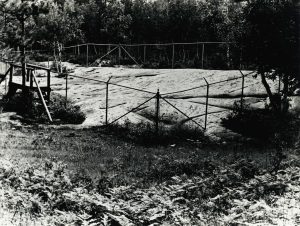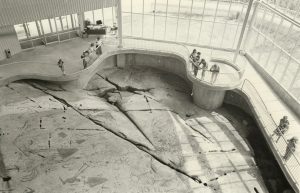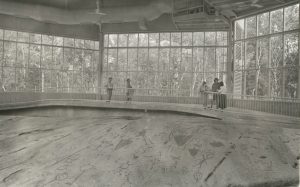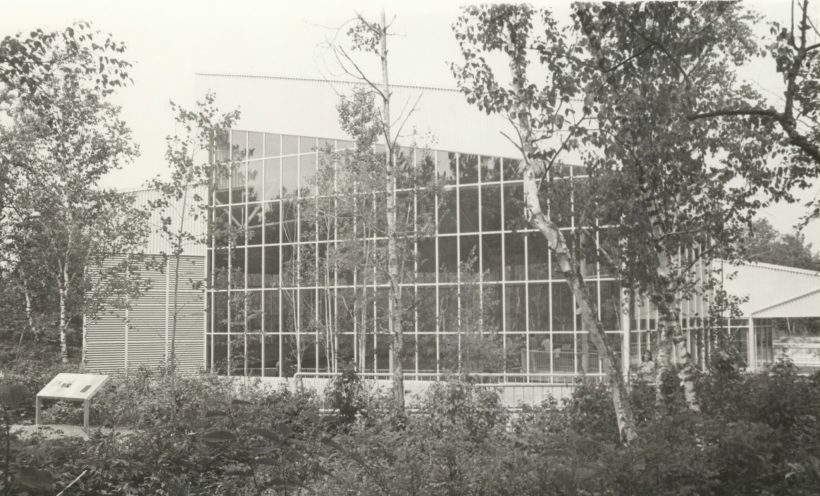PETROGLYPHS PROVINCIAL PARK by BARNEY MOORHOUSE
The Peterboro Petroglyphs (petro= rock, glyph= carving) are a remarkable collection of 900+ ancient images depicting turtles, snakes, birds, humans and other images carved into crystalline limestone. Allegedly, it is the largest known concentration of Aboriginal rock carvings in Canada. Apparently the Algonkian people carved them from 900 to 1400 AD. First Nations call them Kinomagewapkong, “the rocks that teach.” However, Harvard Professor Barry Fell (retired) believed that the Petroglyphs were Norse inscriptions of King Woden-lithi (Servant of Odin), who sailed from Norway and up the St. Lawrence River about 1700 BC. Mayanologist David H. Kelley declared that some of the symbols were European, dating to 1000 BC. And Andis Kaulins added that the Petroglyphs were a sky map of the heavens from 3117 BC based on European tradition and they had nothing to do with Native American traditions. Historian Charles Kingam rediscovered them in 1924.
On May 13, 1954 the Peterborough Examiner’s Outdoors editor Nick Nickels took a phone call from Ernie Craig, an excited mining executive. “Drop everything, grab your camera and head north to Nephton,” (56 km or 35 miles NE of Peterboro). There was something Nickels should see.

It seems that the manager of Industrial Minerals of Canada and two other prospectors had stopped in the bush for lunch and made a remarkable discovery. Australian geologist Charles Phipps noticed a life-sized carving of a crane. Further searching revealed various carvings. Nickels made the trip in his 1933 Model A. “We drove about a mile and a half through the woods; we drove on the rocks whenever we could. Then we walked another mile or so to cross two or three beaver dams to the site,” he said. They could hear an underground stream quite clearly. “It’s a quiet hallowed place, there’s a feeling there,” he said at the time. Due to weathering the carvings blended in with their environment. Nickels used charcoal to highlight the carvings for photographs. Trent University anthropologist Ron Vastokas wrote a book about the site and said the carvings were the work of Ojibwa medicine men over a 400-year time span. “It was a sacred place where the shamen of the group came and recorded some of their visions and the most important symbols in their religious life,” he said.
My personal discovery of the Petroglyphs occurred in 1972, 4 years before Ontario established Petroglyphs Provincial Park (PPP). I was in charge of the Cashel Lake Junior Ranger program sponsored by the Ministry of Natural Resources (MNR) and we had travelled to the area on a work assignment. When I first toured the site a high chain link fence topped with barb wire surrounded most of the carvings entirely exposed to their natural environment. The MNR had built a two story tower overlooking the site and from that vantage we had a better view of the “pictures in rock.” Because not all of the carvings were inside the enclosure we could actually touch some. Approximately 300 of the images are decipherable including humans, shamans, animals, solar symbols, geometric shapes and boats. One publication said the boat drawings do not resemble the traditional Native American boat. One – a solar boat – a stylized shaman vessel with a long mast surmounted by the sun, is typical of Petroglyphs found in northern Russia and Scandinavia. “A fissure in the rock is thought to have been revered as the entrance to the underworld or the symbolic womb of the Earth Mother,” it wrote.
In 1984, at a cost of $800,000, the MNR built a new structure over the carvings to protect them “forever.” All of them. Access to the site follows an approximate half-mile walk from the parking lot. For senior citizens and those who cannot walk long distances there is a closer parking lot. The Curve Lake First Nation is responsible for registering all park visitors. When I first visited the newly renovated site the path along the discovery trail passed under a canopy of poplar, birch and mixed conifers. I recall a sense of adventure with the realization that some of the ancient Algonkian carvers may well have travelled the same pathways. Perhaps, because of the site’s religious significance, I felt subtle vibrations. Or perhaps I just had an over active imagination?
The new structure rose from the ground – apart yet a part of the surroundings. Passing through a clearing, suddenly, it stood before me. A glass house. History under glass. What a contrast. Backwoods history and space age technology harmoniously blending in with the natural birch and maples that encompassed it. I was there to see the rock carvings but couldn’t escape the building. They complimented each other as if it was ever meant to be.
There was no heating system as it relied entirely on solar energy to maintain heat and humidity. In winter fans automatically circulated air if the rock surface dropped 2 degrees beneath the air temperature near the ceiling. During summer fans pull in air if the inside temperature is 5-7 degrees warmer than the outside. (Remember this was 1984.)
The Canadian Conservation Institute (CCI), a world authority on the conservation of rock art, claimed the Petroglyphs would have disappeared in 15 years without some form of protection. In addition to vandals, natural forces were eroding the site. Black algae permeated the rocks breaking them into stone chips. Frost shattered rock.
To further preserve the carvings the CCI suggested photographing the site with a remote control helicopter. Eventually they photographed the site from catwalks in the new building using the same technique that duplicated Egyptian King Tut’s head. This was the first time such a 3D technique was employed on a native rock art site. Now “they” can reproduce the symbols; perhaps another strategy to unlocking their mysteries. By the way, the last time I visited PPP I was asked not to take photos – for spiritual reasons. The photos accompanying this article were innocently taken years ago. Note the black & white. Park Naturalist Mike Riddell said it boils down to a matter of respect. However the visitor may take photos of the images in The Learning Place.

The Petroglyphs are no local phenomenon. Many with a keen interest in archeology have come from Johannesburg, South Africa, Iceland, the Netherlands – even as close as California. When I first visited years ago visitors from Egypt on a world tour remarked on the strong resemblance of the carvings to Egyptian hieroglyphics.
After dark presentations featuring the use of special lights illuminate images unseen to the naked eye during daylight.
Surrounding such an impressive display are hectares of forest, marsh and rock. After stimulating your grey matter it may be a good idea to do something for the bulk of your body. Like hiking the trails which meander over rocky ridges, boardwalks crossing marshes and through forest. Long trails; short trails. To suit your mood or time restraints. I’d recommend comfortable hiking boots, bug dope and rain gear. Prepare for foul weather and foul weather may not prepare for you. A light lunch or trail snacks heighten the pleasure. And keep your eyes peeled for wildlife such as white-tailed deer, beaver, otter and wolves or coyotes. Keep to the pathways and avoid the Poison Ivy.
Ontario Parks staff are on site to “pass on the messages of the teaching rocks.” Special evening programs are offered throughout July and August.

On September 27, 2002, The Learning Place, an interpretive centre, officially opened to teach park visitors the spiritual significance of “the Teaching Rocks” including a 20 minute movie which is also shown at the evening programs. Visitors are encouraged to see this movie before visiting the Petroglyphs site. The Learning Place and the park are open daily 10 am to 5 pm. until Sept. 3. Following that the park is closed Mondays and Tuesdays with holidays being the exception, until October 8.
For more information goto a search engine and type in Petroglyphs Provincial Park. To confirm that the park is open to the public or clarify other questions phone 1.705.877.2552.
